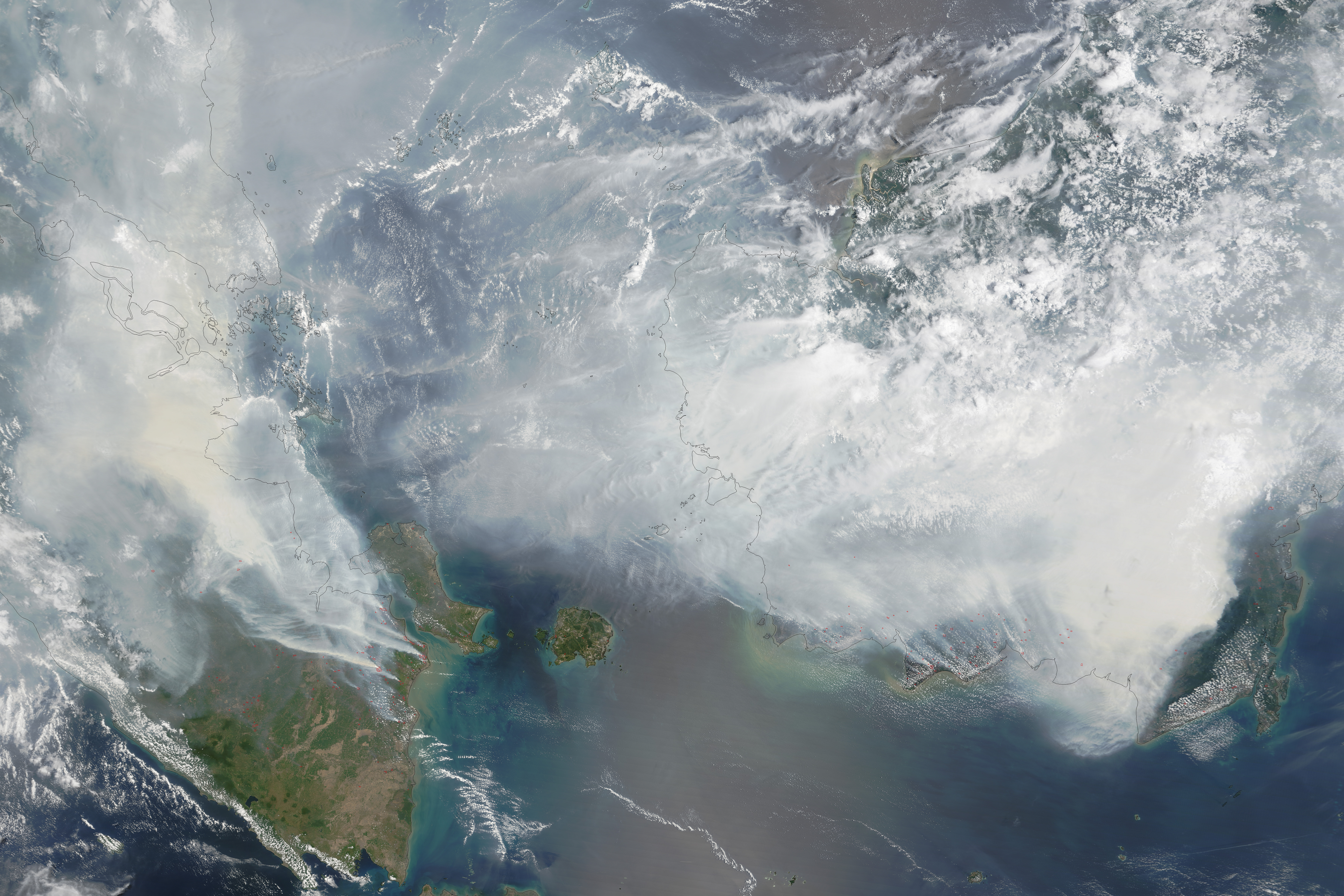There were over a hundred thousand deaths caused by smog and haze brought on by fires in Indonesia last year, a new study states. The fires burned through large swaths of land in the Southeast Asian country, causing respiratory illnesses and other health problems.
The study, led by scientists from Harvard University and Columbia University, is welcomed by other scientists and Indonesia’s medical community as a big leap in putting a number on the suspected public health effects of the fires, which are used to clear grasslands and wooded areas for agriculture. The estimated mortality rate comes from a complex analysis and has yet to be verified, the New York Times reports.
The results of the study have implications for Indonesia’s massive pulp and paper industry and land-use policies and add pressure on its national government to address the crisis.
The research showed that peatlands were a much bigger area of the fires observed by satellites last year compared to 2006 – another year when haze caused a crisis.
The researchers theorized that because the peatlands had to be drained to prepare them for pulpwood plantations, they became more vulnerable to fires.
The number of estimated deaths includes populations in Indonesia and neighboring Malaysia and Singapore, their proximities making them susceptible to the same haze. The issue has strained relations between Indonesia and the other countries.
Indonesia’s official toll was 19 deaths from illnesses and firefighters in the line of duty. But the possible scale of serious health problems was much greater, according to a statement from Indonesia’s disaster management agency that said more than 43 million Indonesians had been exposed to smoke and haze, causing acute respiratory conditions in half a million citizens.
The fires, which blazed from July to October 2015, took place in southern Sumatra and Borneo, were the worst on record since 1997. Over 261,000 hectares of land went up in flames, exacerbated by dry El Nino conditions. Many of the fires were deliberate, set by corporations to clear land.
Experts reviewing the study agree that while the study’s mortality estimates are preliminary, the results should serve as a wake-up call for tougher action on the part of Indonesia’s government to curb these fires and intensify efforts to deal with the public health fallouts.
According to the study, the statistical probabilities for early deaths range from 26,300 and 174,300. The 100,300 estimate is a combination of both. The researchers used a model that they say can be combined with satellite and ground station data to analyze haze in real time. In turn, this could be used to help firefighting efforts directly and reduce smoke.
The people most affected by the crisis are Indonesians in Sumatra and Kalimantan, who live in poverty and have little to no means to protect themselves from the smoke, much less seek help for respiratory illnesses. The Indonesian Medical Association in West Kalimantan says the country faces an overall drop in health if the situation is not swiftly addressed. Nursyam Ibrahim, deputy head, says, “We are the doctors who care for the vulnerable groups exposed to toxic smoke. And we know how awful it is to see the disease symptoms experienced by babies and children in our care.”
The study will be published in Environmental Research Letters.
























